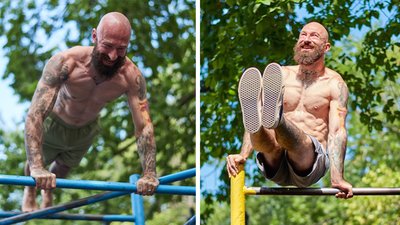There's a guy at my local calisthenics park who likes to correct everybody's form. The other day I watched him criticize someone for failing to do the full range of motion during a set of dips. Though the critique was rude and inappropriate, he did have a point: The person in question was barely doing half of what I would consider to be the minimum range of motion.
Ironically, when the fellow who called him out went to do his own set of dips a few minutes later, he could barely perform half of the range of motion himself!
My reason for relaying this anecdote is not (just) to point out how obnoxious it is to offer unsolicited advice at the park or at the gym, but more to highlight how we're often terribly unaware of our own shortcomings. Pointing the finger is easy, but it takes character to turn the critical eye inward and be as objective as possible about your own training.
This applies to me, too. Nearly a decade has passed since I began sharing workout videos on YouTube. But when I started filming my exercises, I was amazed to discover that a lot of the time what I thought I was doing, and what I was actually doing, were two very different things.
Though I've been training calisthenics for most of my life, I'm still continually learning. I've also coached thousands of others over the years and I've noticed a lot of the same issues tend to come up with beginners, and I sometimes see more experienced people making these mistakes as well.
Don't let the following pitfalls prevent you from making progress with your calisthenics training!
Newbie Mistake 1: Neglecting the Lower Body
One of the most pervasive stereotypes about modern calisthenics practitioners is that we don't train our legs. Though I've been a longtime proponent of calisthenics leg workouts, this stereotype is not entirely unfounded. I've seen many folks focus so much on movements emphasizing their chest, arms, or abs that they forget about their legs entirely. This is true of many iron lifters as well.
Since your legs make up roughly 50 percent of your body, however, the fact of the matter is that if you don't have strong legs, you aren't really strong. The good news is that if you hit them hard, you only need to work your legs once or twice a week.
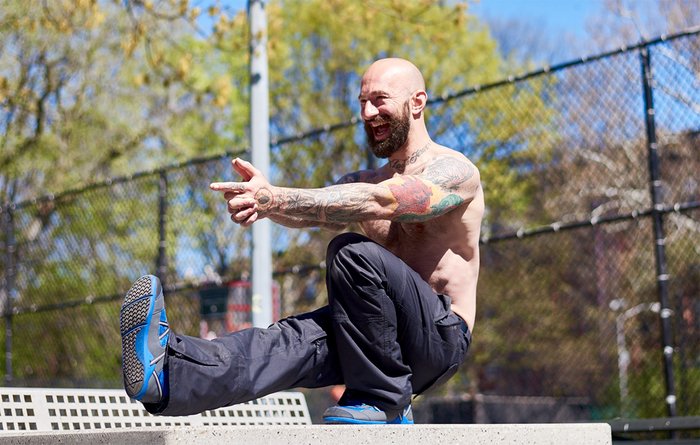
Start by mastering basic bodyweight squats—and doing lots of them. Then you can gradually progress your way up to single-leg pistol squats.
Newbie Mistake 2: Focusing on Muscles over Movements
In conventional strength training, it's common to try to isolate individual muscles or muscle groups with single-joint exercises like biceps curls or leg extensions, but with calisthenics our muscles work more effectively when we use them together. The sum is greater than the individual parts.
Don't get me wrong, there is more emphasis on certain muscles with certain exercises, but there is no such thing as true isolation in the world of calisthenics. Even an exercise like my beloved pull-up, which emphasizes the back and biceps, also significantly involves the chest and abdominal muscles. In fact, studies have shown that pull-ups actually recruit the rectus abdominis to a greater degree than traditional crunches and sit-ups.
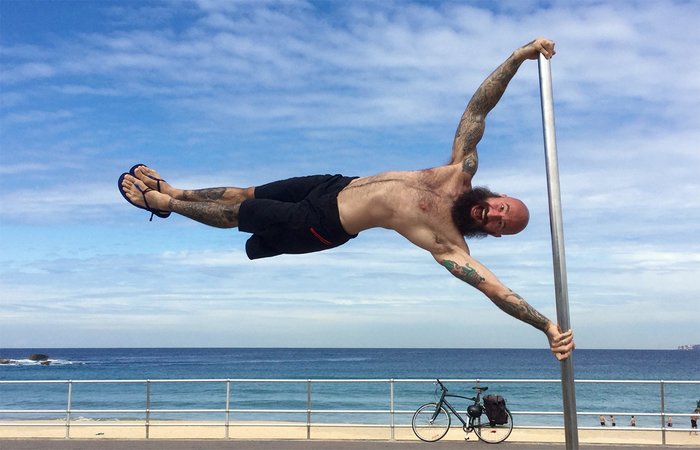
The question "What muscle does this exercise work?" is so common in the strength-training world that many people forget the entire concept of muscle isolation didn't exist until bodybuilding rose to mainstream prominence.
When people ask me what muscles they work training the human flag or elbow lever, my answer is: "All of them!"
Newbie Mistake 3: Rushing Ahead
We all know how badass it looks to do a muscle-up or one-arm pull-up, but you need to build the proper foundation before attempting any high-level calisthenics. Bodyweight training is among the safer strength-training modalities, but any exercise is potentially dangerous if it is performed with poor technique or by a practitioner who is not properly prepared.
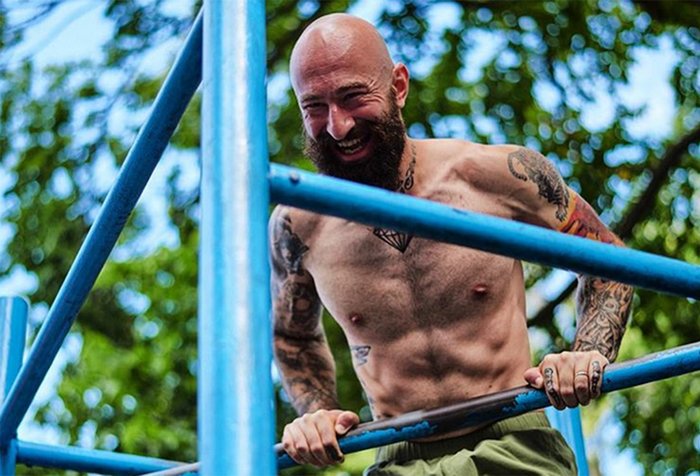
A good baseline of strength will be achieved once you've built up to at least 30 strict push-ups, 10 strict pull-ups, and lots and lots of bodyweight squats. If those sound like the standards of the Century Test at the Progressive Calisthenics Certifications that my brother Danny and I lead, it's not a coincidence.
Focus on those milestones before you begin to experiment with anything more advanced. Your joints will thank you for it later.
Newbie Mistake 4: Failing to Perform a Full Range of Motion
Though some lifters will intentionally perform partial reps, most folks who fail to complete a full range of motion believe they are going all the way up and all the down. Like my form-policing friend at the park, oftentimes we feel like we are moving a greater distance than we actually are.
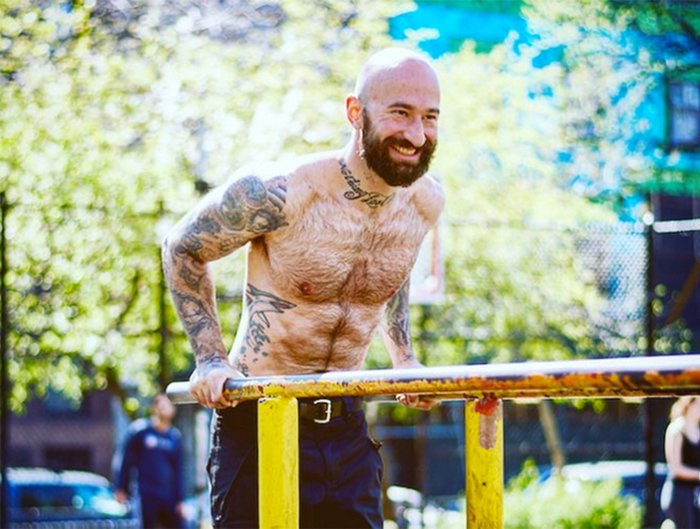
This is part of why is can be helpful to have a qualified trainer to help correct your form. If you can't find or afford one, recording video of your workouts is your next best option. Taking footage of your training isn't just for showing off on Instagram, it's a fantastic tool to help you objectively assess your technique. You might see the full ROM taking place in your mind's eye, but the camera can provide a more objective viewpoint.
Newbie Mistake 5: Valuing Quantity Over Quality
While it's great to have ambitious training goals, focusing too much on reaching a certain number of reps in a given set—or even just a single rep that you're not quite ready for yet—can lead to sacrificing control and alignment. It's also another reason folks sometimes shortchange their range of motion.
Ironically, when you focus too heavily on the goal, you lose sight of what's actually happening in the moment. The truth is, you are much better off doing 5-6 strict, full range of motion pull-ups than 20 swinging half-reps.
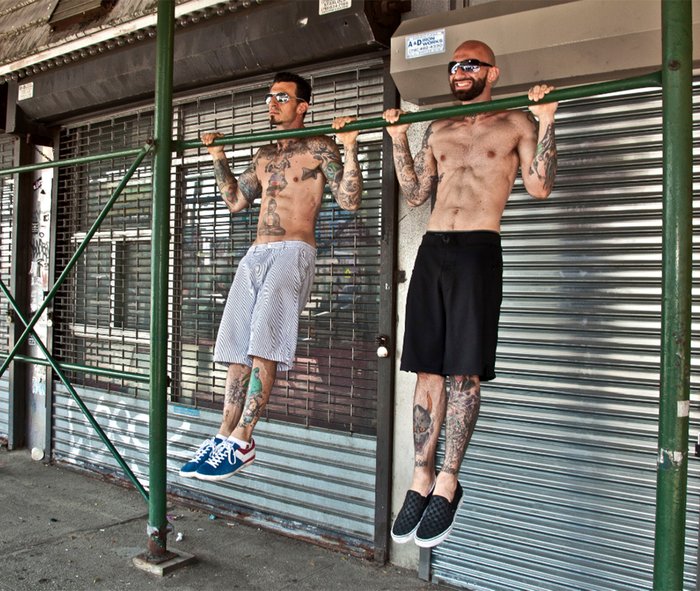
You can still aim to get those 20 pull-ups, but if you are sacrificing form to get there, you're better off breaking them up into multiple sets in order to ensure that your technique remains intact. Take your time and focus on doing each aspect of every exercise with care and attention.

